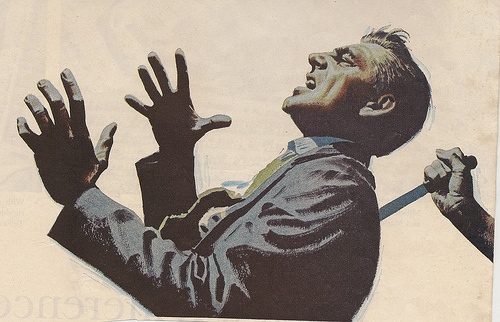Backstabbing Friends Quotes Biography
source{google.com.pk}Anne Frank and those in hiding with her were betrayed to the occupying Nazi forces by an unidentified informant on 4 August 1944, resulting in their imprisonment and deportation to concentration camps. Of the eight, only Otto Frank survived. (Hermann van Pels died three weeks after his arrival at Auschwitz concentration camp, Fritz Pfeffer died 20 December 1944 in Neuengamme, Edith Frank died in January 1945 at Auschwitz-Birkenau, Anne and Margot died within three days of each other in March 1945 at Bergen-Belsen, Auguste van Pels died sometime between April and May 1945 at Theresienstadt, and Peter van Pels died in May 1945 in Mauthausen.) Despite repeated investigations, the identity of their betrayer has never been established and remains one of the enduring mysteries of the Second World War. As Jewish refugees, Anne Frank's family fled to Amsterdam from the state-sponsored antisemitism of Germany in February 1934, after Adolf Hitler's succession to Chancellor. Although anti-Jewish decrees followed the Nazi invasion of The Netherlands in 1940, the Franks remained relatively safe until Margot received a deportation order in July 1942. Her father, Otto Frank immediately sequestered the family in the hiding place he had already prepared in the sealed-off upper rooms of the annex of his office building at Prinsengracht 263 in the city centre. He and his wife Edith, with Margot and Anne, were joined within the month by Otto Frank's colleague Hermann van Pels, his wife Auguste and their son Peter and then four months later by another German Jewish refugee, Fritz Pfeffer. The eight fugitives were successfully hidden for just over two years by their small group of friends who worked in the building. These helpers concealed the hiding place and provided its occupants with black market food and clothing. Although the threat of discovery was ever-present, the sudden arrival of the SD (German: Sicherheitsdienst or "Security Service") and Dutch policemen on 4 August 1944 took everyone involved by surprise. At around 10 or 10:30am on Friday 4 August 1944, the warehouseman of Prinsengracht 263, Wilhelm van Maaren, was met by a uniformed German officer, Karl Silberbauer, and several plain-clothed Dutch policemen. While one of the policemen stayed with van Maaren in the warehouse, the others made their way to the first floor above where they found Victor Kugler (Kraler) in his office at the rear of the building, and Miep Gies (Miep), Bep Voskuijl (Elli), and Johannes Kleiman (Koophuis) in theirs at the front. They were instructed to stay in the room but in the confusion that followed, Bep managed to escape with a few documents which would have incriminated their black market contacts. Kugler was instructed by Silberbauer to accompany him and the policemen on a search of the building and, after investigating the storerooms on the second floor of the front building, the officers took him to the first floor of the rear building, to the corridor in front of the hiding place. In the meantime, Miep was told at gunpoint to stay where she was while Silberbauer searched the building. Miep and Bep found Anne's diaries and papers after the eight prisoners, together with Kugler and Kleiman, had been arrested and removed from the building. It became apparent to Bep, Miep and Miep's husband Jan (who knew about and assisted the people in hiding), that the specific nature of the arrest indicated they had been betrayed rather than discovered by chance by the Gestapo Warehouseman Wilhelm van Maaren (1895-1971) had replaced Bep Voskuijl's father, Johannes Hendrik Voskuijl, when the latter retired through ill-health in 1943. Van Maaren's inquisitiveness about the sealed-off rooms which formed the hiding place and the discovery that he had been making petty thefts of office supplies made his colleagues wary of him, but it was only when they discovered he had set small traps in the store rooms to reveal movement within the building at night that suspicion was raised that he may have been trying to expose them. His apparently untrustworthy character, his seeming determination to uncover what his colleagues were hiding, a boast he made to Miep Gies about having Gestapo connections, and the fact that the building's keys were given to him by the arresting officer, contributed to their suspicion that he had correctly deduced people who were being hidden in the building, but hardly indicated that he had informed the Gestapo about them. The protectors were divided. Kugler, Bep, and Kleiman suspected him guilty, while Miep, Jan, and Otto Frank remained unconvinced. During a 1948 investigation into the betrayal, van Maaren denied being the informant, but confirmed he had suspected 'something peculiar' taking place in the building. He was cleared by the investigating body, the PRA (Politieke Recherche Afdeling, the Political Investigation Branch), of betrayal because of a lack of evidence and placed on probation. He appealed, and the case was heard by a district court in 1949. He was unconditionally cleared. However, he was called back as a suspect when another investigation into the betrayal took place between November 1963 and November 1964. The Criminal Investigation Department re-opened the case after Karl Silberbauer was traced. Silberbauer could neither identify Van Maaren (or Miep Gies for that matter) nor provide any new information which could lead to a suspect, as his superior (who had committed suicide after the German defeat) had not divulged the informant's name when he was sent to Prinsengracht 263. Van Maaren was investigated more than any other suspect in the case and continued to assert his innocence until his death in 1971. Lena van Bladeren-Hartog (died 1963) was the wife of van Maaren's assistant, Lammert Hartog, and was employed in the Opekta offices as a cleaner in 1944. Kleiman reported in an official investigation that in June 1944 he was told by a friend, Anna Genot, that Lena told her she knew that people were being hidden at 263 Prinsengracht. When questioned later, Anna and her husband, Petrus, claimed they'd also known about the hiding place since 1942, when they were cleaners in the building and noticed the large quantities of milk and bread being delivered. Lammert stated in an investigation that van Maaren had told him that Jews were being hidden in the building, and it is possible that he told his wife, who passed it to the Genots. In her 1998 biography of Anne Frank,[1] Melissa Muller went as far as to name Lena van Bladeren-Hartog as the informant, and this subsequently represented in the televised mini-series based on the book. The claim was dismissed in 2003 after an investigation by the Netherlands Institute for War Documentation after Carol Ann Lee contradicted the assertion in her biography of Otto Frank. Lee quotes a 2000 interview with Miep Gies, who also dismissed the Tonny Ahlers (1917-2000) was a Dutch Nazi, petty criminal, and informant to Kurt Döring at the Amsterdam Gestapo headquarters. According to Carol Ann Lee's investigations, he met Otto Frank in 1941 and attempted to blackmail him after the war. In 2002, she named him as the betrayer of Anne Frank, which prompted the first investigation into the case since 1964. Ahlers's wife, Martha, denied Lee's claim, but it was supported by his brother (Cas Ahlers) and son (Anton), who claimed to have heard confessions from Ahlers himself that he had betrayed the inhabitants of the Secret Annexe. As no hard evidence could be produced, and Tonny Ahlers's claims to his family could not be verified, he along with Willem van Maaren and Lena van Bladeren-Hartog were cleared by The Netherlands Institute for War Documentation in their 2003 summary of The Netherlands Institute for War Documentation (NIOD) reopened their archives in light of two new theories about the betrayal of Anne Frank. The first, in Melissa Muller's Anne Frank: the Biography[1] asserted a claim against Lena van Hartog. The second, in Carol Ann Lee's The Hidden Life of Otto Frank, concluded that Tonny Ahlers was indeed guilty. As both were supported solely by circumstantial evidence, neither could be substantiated. NIOD concluded that the betrayer's identity is still unknown.
Her stepsister's testimony In a book describing the betrayal and transportation to Auschwitz of her own family, Eva Schloss, whose mother Elfriede (Mutti) Geiringer married Otto Frank after the War, tells of the trial of a Nazi collaborator Miep Braams. "Braams was the girlfriend of a Dutch resistance worker called Jannes Haan, and she was supposed to be helping him protect Jews and help the Resistance. As the war progressed, Haan became suspicious that his girlfriend was really a double agent for the Nazis: an awful lot of the Jewish families he entrusted to her were vanishing without trace, or being rounded up. When she became aware of his suspicions, Braams betrayed Haan to the Gestapo, and he was executed. It was later estimated that Miep Braams was responsible for betraying as many as two hundred Jewish families, including ours." (p. 196) In April 1949, Braams received a sentence of (only) six years. Schloss does not state that she was responsible for the betrayal of the Frank family, but it's a reasonable conjecture.
Backstabbing Friends Quotes Tumblr And Sayings For Girls Funny Taglog For Facebook Images Short Pictures

Backstabbing Friends Quotes Tumblr And Sayings For Girls Funny Taglog For Facebook Images Short Pictures

Backstabbing Friends Quotes Tumblr And Sayings For Girls Funny Taglog For Facebook Images Short Pictures

Backstabbing Friends Quotes Tumblr And Sayings For Girls Funny Taglog For Facebook Images Short Pictures

Backstabbing Friends Quotes Tumblr And Sayings For Girls Funny Taglog For Facebook Images Short Pictures

Backstabbing Friends Quotes Tumblr And Sayings For Girls Funny Taglog For Facebook Images Short Pictures

Backstabbing Friends Quotes Tumblr And Sayings For Girls Funny Taglog For Facebook Images Short Pictures

Backstabbing Friends Quotes Tumblr And Sayings For Girls Funny Taglog For Facebook Images Short Pictures

Backstabbing Friends Quotes Tumblr And Sayings For Girls Funny Taglog For Facebook Images Short Pictures

Backstabbing Friends Quotes Tumblr And Sayings For Girls Funny Taglog For Facebook Images Short Pictures

Backstabbing Friends Quotes Tumblr And Sayings For Girls Funny Taglog For Facebook Images Short Pictures
No comments:
Post a Comment